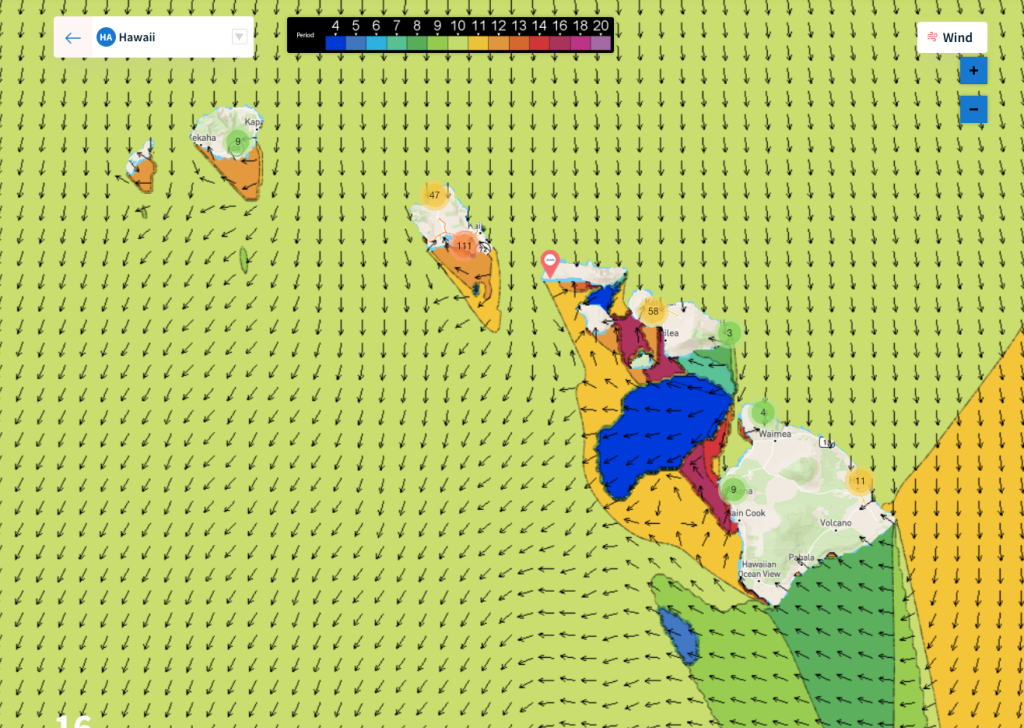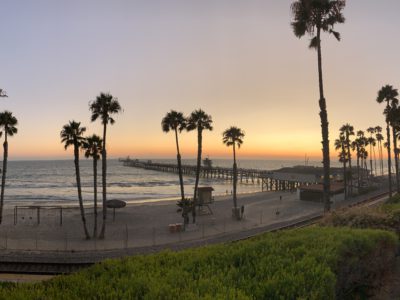Wave periods can be confusing for a surfer. To help you out, we’ve compiled some science to help you understand what wave periods are, how they are measured, factors that affect them, and how to use this knowledge to your advantage. If you’re looking for a more general guide, here is our overview of how to read a surf forecast.
 Introduction to Surf Wave Periods
Introduction to Surf Wave Periods
Surf wave periods refer to the time it takes for two consecutive wave crests to pass a fixed point in the ocean. This measurement is important because it affects the length and quality of the wave. The longer the wave period, the longer the wave will be and the more time you will have to ride it.
Surf wave periods are affected by a variety of factors, including wind speed, wind direction, water depth, and ocean floor contours. As a surfer, understanding how these factors influence surf wave periods can help you predict when the best waves will occur and where to find them. Another helpful guide from the university of Hawaii here
Understanding Surf Wave Frequency and Wavelength
Before diving deeper into surf wave periods, it’s important to understand surf wave frequency and wavelength. Surf wave frequency refers to the number of waves that pass a fixed point in the ocean within a given time period.
Surf wave wavelength refers to the distance between two consecutive wave crests. The wavelength is measured in meters and is affected by the frequency and speed of the wave. The longer the wavelength, the faster the wave travels.
What is Surf Wave Period and How is it Measured?
Surf wave period is the time it takes for two consecutive wave crests to pass a fixed point in the ocean, measured in seconds. The longer the surf wave period, the more energy the wave has and the longer it will last.
Surf wave period is measured using a buoy system. These buoys sit on the ocean surface and are equipped with sensors that measure the height, frequency, and period of the waves passing by. The data collected from these buoys is then used to create surf reports and forecasts that are valuable to surfers.
Factors That Affect Surf Wave Period
There are several factors that affect surf wave period, including wind speed, wind direction, water depth, and ocean floor contours.
Wind speed and direction play a significant role in the creation of waves. When wind blows over the surface of the ocean, it creates ripples that eventually turn into waves. The stronger the wind, the larger the waves will be.
Water depth is also an important factor in surf wave period. As waves travel from deeper water to shallower water, they slow down and increase in height. This is because the energy of the wave is compressed into a smaller area, causing the wave to become steeper and taller.
Ocean floor contours also affect surf wave periods. When waves encounter different underwater terrain, such as reefs or sandbars, the wave energy is either absorbed or reflected, affecting the wave’s height and length.
The Significance of Surf Wave Period for Surfing
Surf wave period is a crucial element for surfers to consider when searching for the perfect wave. A longer surf wave period generally results in longer, smoother, and more powerful waves. Shorter wave periods, on the other hand, create choppier and less predictable waves.
Surf wave period also affects the difficulty level of a surf spot. Longer wave periods typically require more skill and experience to ride, while shorter wave periods are better suited for beginners.
Reading and Predicting Surf Wave Periods
To maximize your surfing performance, it’s important to know how to read and predict surf wave periods. Surf reports and forecasts provide valuable information on the expected wave height, frequency, and period for a particular surf spot.
When reading surf reports, focus on the predicted surf wave period. Look for spots that have a longer wave period, as these will generally produce better waves. Also, pay attention to the direction of the waves. Waves that are coming straight at the beach will typically have a shorter period than waves that are approaching at an angle.
Maximize Your Surfing Using Surf Wave Periods
Understanding surf wave periods can help you maximize your surfing performance. By seeking out surf spots with longer wave periods, you can increase your chances of riding longer and smoother waves.
Common Misconceptions About Surf Wave Periods
There are several common misconceptions about surf wave periods. One of the most common is that larger waves always have a longer period. While this is often true, it’s not always the case. The size of a wave is determined by the wind speed and duration, while the period is determined by the distance between two consecutive wave crests.
Another misconception is that wave height is the only factor that affects surf wave periods. While wave height is important, it’s just one of many factors that influence surf wave periods.


